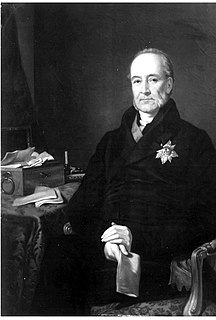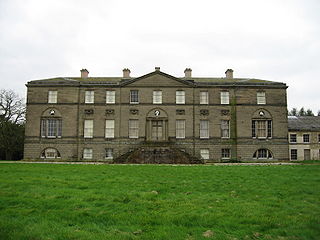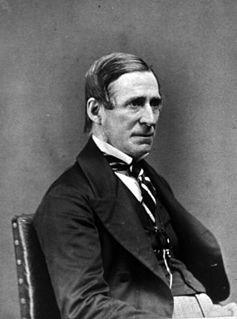Related Research Articles

Baron Heytesbury, of Heytesbury in the County of Wiltshire, is a title in the Peerage of the United Kingdom. It was created in 1828 for the prominent politician and diplomat Sir William à Court, 2nd Baronet, who later served as Ambassador to Russia and as Viceroy of Ireland. His son, the second Baron, sat as Member of Parliament for the Isle of Wight. On his marriage in 1837 to Elizabeth Holmes, daughter of Sir Leonard Worsley Holmes, Lord Heytesbury assumed the additional surname of Holmes. His son the 4th baron commanded a battalion in the Wiltshire Regiment and was for a time in command of 62nd (Wiltshire) Regiment of Foot. As of 2010, the titles are held by his great-great-great-grandson, the seventh Baron, who succeeded his father in 2004.

The Broughton, later Broughton-Delves, later Broughton Baronetcy, of Broughton in the County of Stafford, is a title in the Baronetage of England. It was created on 10 March 1661 for Sir Brian Broughton, of Broughton Hall, near Eccleshall, Staffordshire, High Sheriff of Staffordshire from 1660 to 1661 and the member of an ancient Staffordshire family.

There have been four baronetcies created for members of the Acland family, which originated in the 12th century at the estate of Acland in the parish of Landkey, North Devon, two in the Baronetage of England and two in the Baronetage of the United Kingdom.
Nineteen baronetcies have been created for persons with the surname Hamilton, eight in the Baronetage of Nova Scotia, one in the Baronetage of England, five in the Baronetage of Ireland, one in the Baronetage of Great Britain and four in the Baronetage of the United Kingdom. As of 2008 two creations are extant, two are dormant, two are either extinct or dormant and twelve extinct.

The Sitwell Baronetcy, of Renishaw in the County of Derby, is a title in the Baronetage of the United Kingdom. It was created on 3 October 1808 for Sitwell Sitwell, Member of Parliament for West Looe. The Sitwell family had been ironmasters and landowners in Eckington, Derbyshire, for many centuries.
The Egerton, laterGrey Egerton, later stillEgerton baronetcy, of Egerton and Oulton in the county of Chester, is a title in the Baronetage of England held by the senior patrilineal branch of the Egerton family.
There have been two baronetcies created for members of the Blackett family, both in the Baronetage of England. One creation is extant as of 2013. The Blackett family can be traced back to the Blacketts/Blakheveds of Woodcroft, County Durham, some of whom became highly successful in the lead and coal mining industries in Northumberland and County Durham.

The Chaytor family is an English gentry family on which has been conferred two baronetcies, one in the Baronetage of England and one in the Baronetage of the United Kingdom and several knighthoods. As of 2008 one baronetcy is extinct.
There have been two baronetcies created for persons with the surname Carden, one in the Baronetage of Ireland and one in the Baronetage of the United Kingdom. Both creations are extant as of 2010.

There have been three baronetcies created for persons with the surname Paget, all in the Baronetage of the United Kingdom, and a fourth created for the Bayly, which later became the Paget Baronetcy. As of 2016, two of the creations are extant.
There have been four baronetcies created for persons with the surname Butler; two in the Baronetage of Ireland and two in the Baronetage of the United Kingdom. As of 2014 two of the creations are extant.
The Houstoun, later Houstoun-Boswall Baronetcy, is a title in the Baronetage of the United Kingdom.

The Murray, later MacGregor of MacGregor Baronetcy, of Lanrick in the County of Perth, is a title in the Baronetage of Great Britain. It was created on 3 July 1795 for John Murray. He was a member of the Scottish MacGregor clan. This branch of the family had been forbidden to wear their own surname by King James VI, the only instance of this in British history. The ban was revoked in 1661 by King Charles II but restored during the reign of William and Mary. It was finally repealed in 1774. However, it was not until 1822 that the family obtained Royal licence to use the family surname. The second Baronet was a colonial administrator and served as Governor of Dominica, Antigua, Barbados and Trinidad. Sir Evan MacGregor, third son of the second Baronet, was Permanent Secretary to the Admiralty. The sixth Baronet was a Brigadier in the Scots Guards. The MacGregors of MacGregor are also the Chiefs of Clan Gregor.

George Anson, known as George Adams until 1773, was a Staffordshire landowner from the Anson family and a British Whig politician who sat in the House of Commons between 1761 and 1769.
General Sir William Payne-Gallwey, 1st Baronet was a British soldier and Governor of the Leeward Islands. He was the youngest son of Ralph Payne by his second spouse Margaret née Gallwey, of St. Kitts, West Indies. He served as a Lieutenant-general in India, and was at one point second-in-command of the British Army in Spain. Thereafter he was appointed Governor of the Leeward Islands. General Payne was the half-brother of Ralph Payne, 1st Baron Lavington, who had also served as Governor of the Leeward Islands.
There have been two baronetcies created for members of the Haggerston, later Constable Maxwell-Scott family, one in the Baronetage of England and one in the Baronetage of the United Kingdom. Only one creation is extant as of 2008. The Haggerston, later Constable Maxwell-Scott Baronetcy, of Haggerston in the County of Northumberland, was created in the Baronetage of England on 15 August 1642 for Thomas Haggerston, of Haggerton Castle, Northumberland, a loyal Royalist who served as a colonel in the army of King Charles I. The Haggerston were recusant in the 17th century and the estates were sequestered and forfeit to the Commonwealth of England in 1649 but were repurchased by the first Baronet in 1653. The line of the fourth Baronet failed on the death of the twelfth Baronet in 1972. The title reverted to the line of William Haggerston, second son of the third Baronet and younger brother of the fourth Baronet. In 1746 he inherited estates in Yorkshire from his great-uncle Sir Marmaduke Francis Constable, 4th and last Baronet, of Everingham, and assumed the surname of Constable in lieu of his patronymic. In 1758 he married Winifred, daughter of Robert Maxwell, titular sixth Earl of Nithsdale, and assumed by Royal licence the additional surname of Maxwell. Winifred was considered to be the heiress to the Scottish lordship of Herries of Terregles held by her father. Constable-Maxwell built a new house at Everingham Park on the Constable estate in Yorkshire.
There have been three baronetcies created for persons with the surname Pole, one in the Baronetage of England, one in the Baronetage of Great Britain and one in the Baronetage of the United Kingdom. Two of the creations are extant as of 2008.

There have been four baronetcies created for persons with the surname Sutton, one in the Baronetage of Great Britain and three in the Baronetage of the United Kingdom. One creation is extant as of 2021.

Brigadier Sir Arthur Brian Sherlock Heywood Gooch, 14th Baronet, DL is an English baronet and retired regular officer of the British Army. He was also an aide-de-camp to Queen Elizabeth II.

General Sir James Charles Chatterton, 3rd Baronet, was a British Army officer and politician; he was the third and last of the Chatterton baronets of Castle Mahon. He fought during both the Peninsular and Waterloo Campaigns, later becoming Member of Parliament (MP) for Cork, Ireland.
References
- 1 2 Kidd, Charles, & Williamson, David, (eds) Debrett's Peerage and Baronetage (New York: St Martin's Press, 1990 edition)
- 1 2 3 'Mahon, Colonel Sir William (Walter)' in Who's Who (UK) for 2008 (online edition)
- ↑ "No. 59647". The London Gazette (Supplement). 31 December 2010. p. 3.